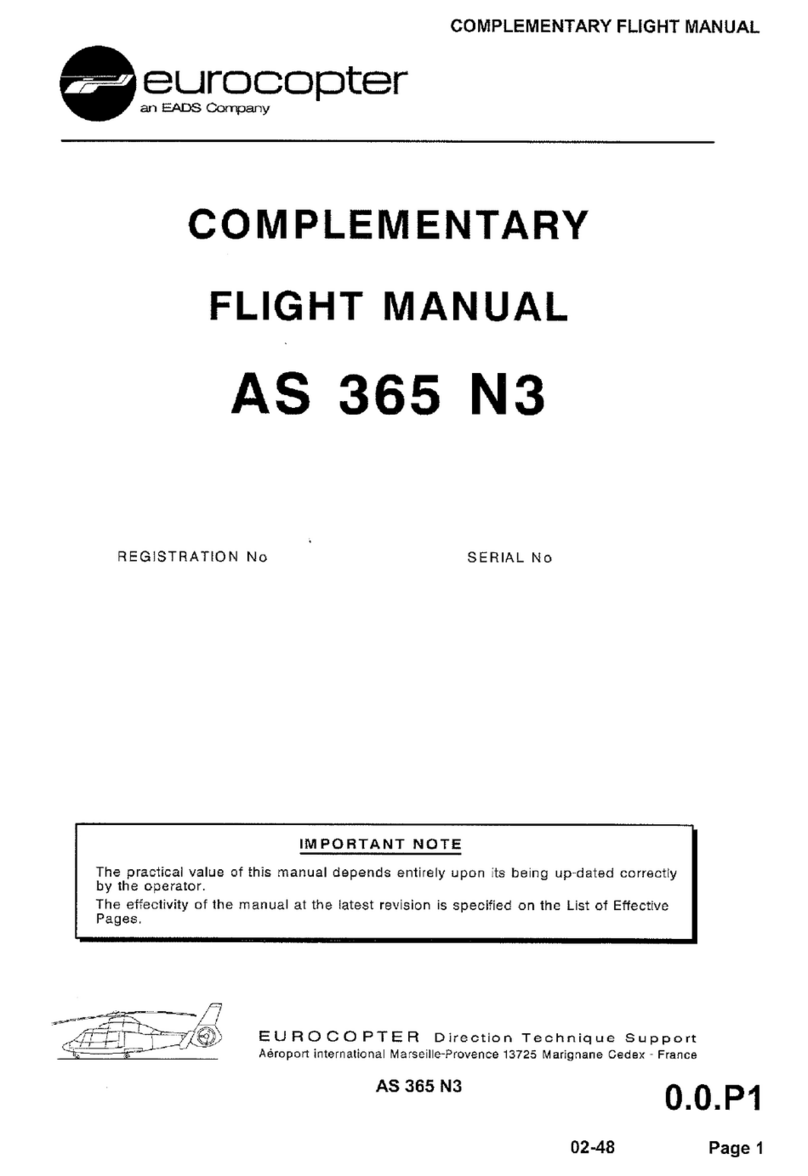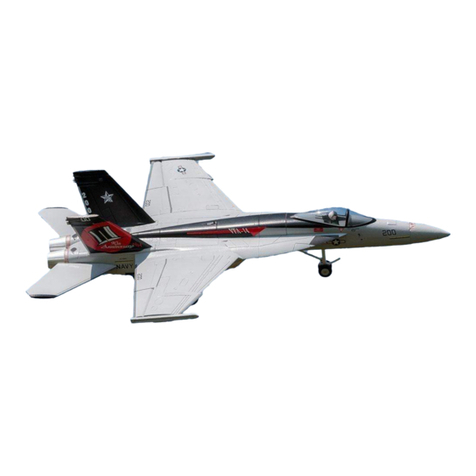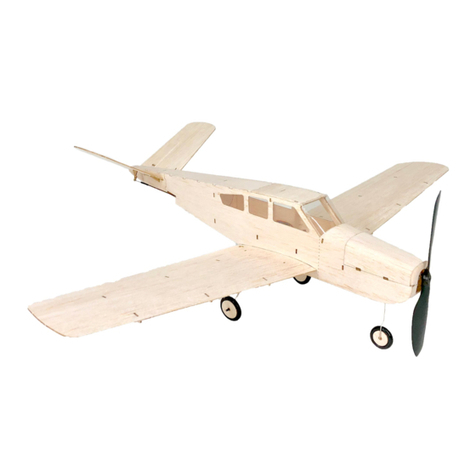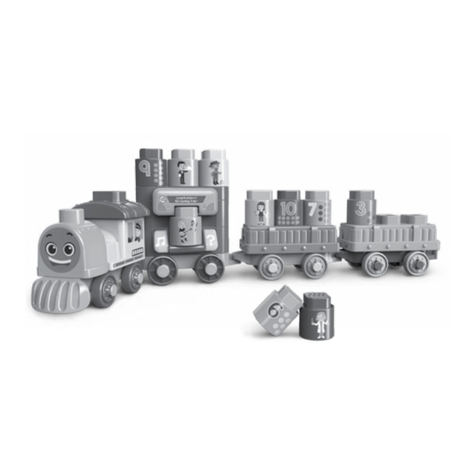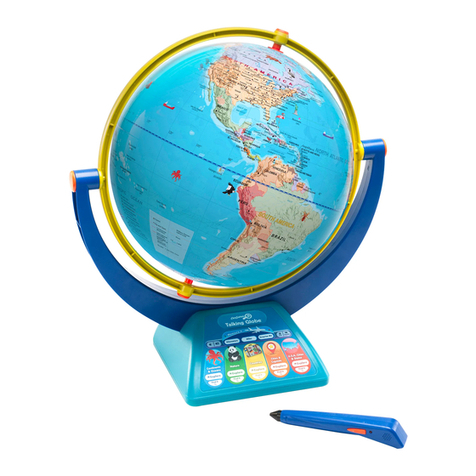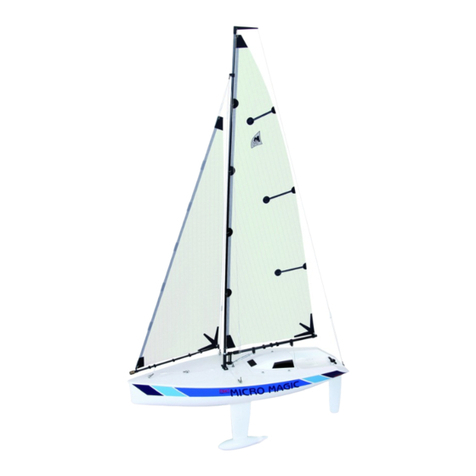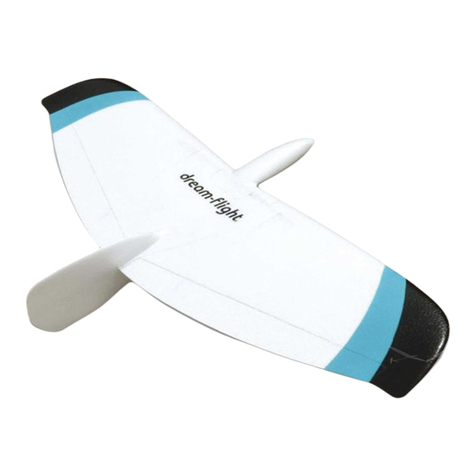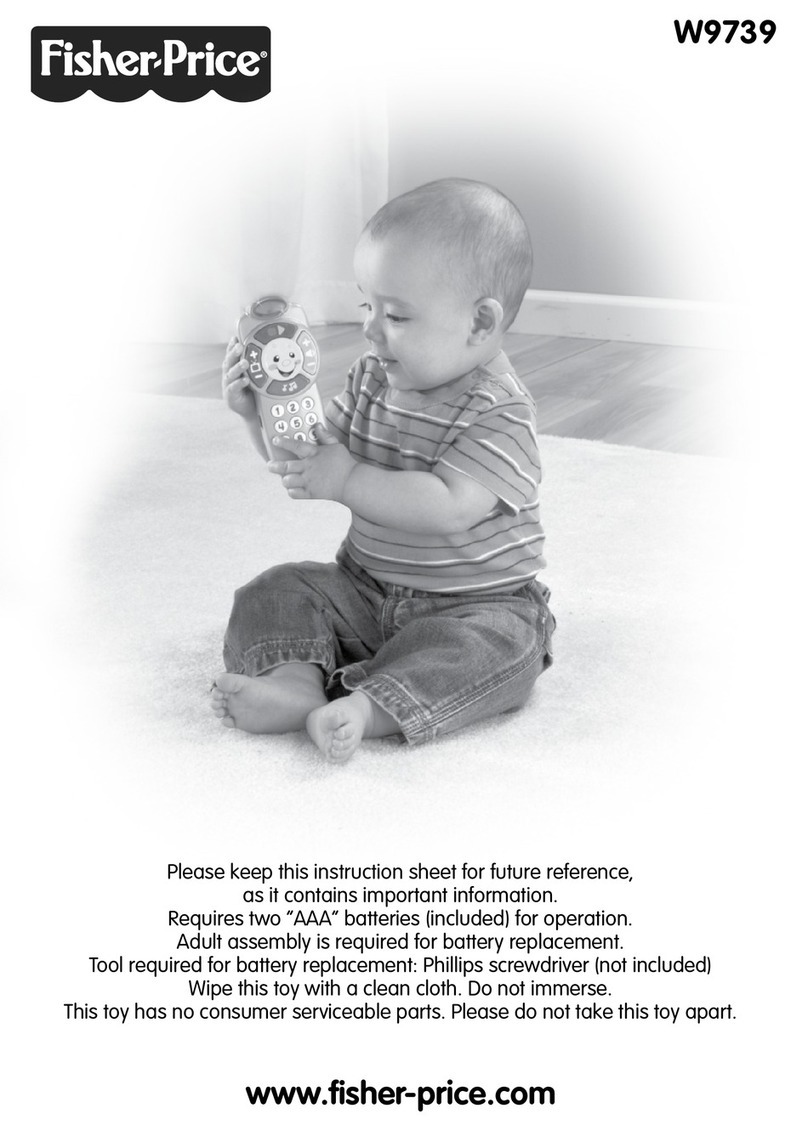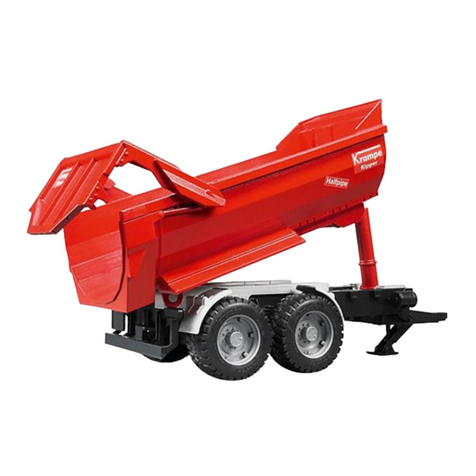www.seagullmodels.com
3
1) Carefully remove the aileron from one
of the wing panels. Note the position of the
hinges.
2)Remove each hinge from thewing panel
and aileron and place a T-pin in the center of
each hinge. Slide each hinge into the wing
panel until the T-pin is snug against the wing
panel. This will help ensure an equal amount
ofhingeison either sideofthehingeline when
the aileron is mounted to the aileron.
3) Slide the wing panel on the aileron until
there is only a slight gap. The hinge is now
centered on the wing panel and aileron.
Remove the T-pins and snug the aileron
against the wing panel.A gap of 1/64” or less
shouldbe maintained betweenthe wing panel
andaileron.
The control surfaces, including the
ailerons, elevators, and rudder, are
prehinged with hinges installed, but the
hinges are not glued in place. It is
imperativethat you properly adhere the
hingesin placeper the steps that follow
using a high-quality thin C/A glue.
Note:
4)Deflect the aileron and completely
saturate each hinge with thin C/A glue. The
aileronsfrontsurfaceshould lightly contactthe
wing during this procedure. Ideally, when the
hinges are glued in place, a 1/64” gap or less
will be maintained throughout the lengh of the
aileron to the wing panel hinge line.
Note: The hinge is constructed of a special
material that allows the C/A to wick or
penetrateanddistributethroughout the
hinge, securely bonding it to the wood
structureof the wingpanel and aileron.
To avoid scratching your new aero-
plane we suggest that you cover your work-
benchwith an oldtowel. Keepa couple ofjars
orbowlshandytoholdthesmallpartsafteryou
open the bags.
Pleasetrialfitallparts.Makesureyouhavethe
correct parts and that they fit and are aligned
properlybeforegluing!Thiswillensureproper
assembly as the NEMESIS is made from
natural materials and minor adjustments may
have to be made. The paint and plastic parts
usedinthiskitarefuelproof.However,theyare
not tolerant of many harsh chemicals includ-
ingthefollowing:paintthinner,cyano-acrylate
glueaccelerator,cyanoacrylategluede-bonder
andacetone.Donotletthesechemicalscome
incontactwiththecoloursonthecoveringand
the plastic parts.
NOTE:
HINGING THE AILERONS.
5) Turn the wing panel over and deflect the
aileron in the opposite direction from the
opposite side. Apply thin C/A glue to each
hinge,makingsurethat the C/A penetrates into
both the aileron and wing panel.
6) Using C/A remover/debonder and a
papertowel, remove anyexcess C/A gluethat
may have accumulated on the wing or in the
aileronhinge area.
Hinge.
Hinge.
Hinge.
C/Aglue.



















